
The Simpsons: Road Rage is a 2001 racing video game based on the animated television series The Simpsons, and is part of a series of games based on the show. It was released for PlayStation 2, Xbox and GameCube. A Game Boy Advance version was released in 2003.

Wreckless: The Yakuza Missions, known in Japan as Double S.T.E.A.L., is a 2002 racing video game originally released on the Xbox and later for GameCube and PlayStation 2. The game is set in Hong Kong, in which the player completes missions.

NBA Street is a basketball video game developed by NuFX and EA Canada and published by Electronic Arts under the EA Sports BIG label. It was released for the PlayStation 2 on June 19, 2001, and on February 5, 2002, for the GameCube. The game combines the talent and big names of the NBA with the attitude and atmosphere of streetball.

18 Wheeler: American Pro Trucker, known in Japan as 18 Wheeler, is an arcade game developed by Sega AM2 and distributed by Sega. The game was released in arcades in 1999 and ported to the Dreamcast in 2000. It was released for the PlayStation 2 in 2001 and GameCube in 2002 by Acclaim Entertainment. Sega followed up on the success of 18 Wheeler with a sequel, The King of Route 66, which was released in the arcades in 2002 and ported to the PlayStation 2. This was one of the final arcade games to be ported to the Dreamcast after its discontinuation, before Sega became a third-party developer.

Madden NFL 2003 is an American football simulation video game based on the NFL that was developed by EA Tiburon and Budcat Creations and published by EA Sports. The 14th installment of the Madden NFL series, the game features former St. Louis Rams running back Marshall Faulk on the cover. This edition of Madden was the first to have EA Trax, the Mini Camp mode, and to feature Al Michaels as play-by-play announcer, who took over for Pat Summerall. Although it featured the expansion Houston Texans and the relocation of the Seattle Seahawks to the NFC, it was actually the second to do so. The game was released on August 12, 2002, for the Game Boy Advance, GameCube, Microsoft Windows, PlayStation, PlayStation 2 and Xbox. The PlayStation version also includes the Sega Genesis version of John Madden Football 93.
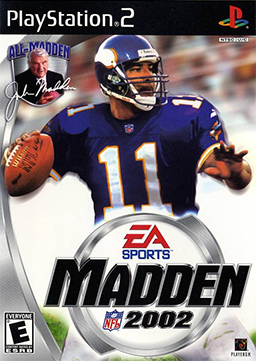
Madden NFL 2002 is an American football video game. It features former Minnesota Vikings quarterback Daunte Culpepper on the cover. Pat Summerall and John Madden are the commentators. The Madden NFL 2002 commercial first aired during Super Bowl XXXVI, three days after Madden NFL 2002 started selling in Japan. Notably, it does not feature the Super Bowl MVP Tom Brady, who is included on later editions of the game as a roster update. It is also the first game to be developed by Budcat Creations.

NASCAR: Dirt to Daytona is a racing simulator developed by Monster Games and published by Infogrames in November 2002 for the PlayStation 2 and GameCube. It features NASCAR's Dodge Weekly Racing Series, Featherlite Modified Tour, Craftsman Truck Series, and the NASCAR Winston Cup Series. The Dodge Weekly Racing Series and Featherlite Modified Tour rosters consist of generic fantasy drivers. The Craftsman Truck Series also features fantasy drivers alongside real ones. The unique feature of having to work your way up through the ranks from the low tier Weekly Racing Series to the Cup Series would later return in EA Sports' NASCAR 2005: Chase for the Cup.
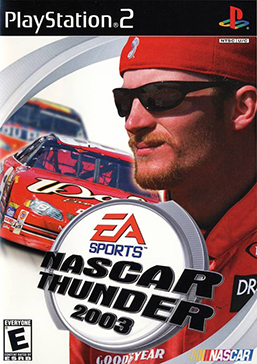
NASCAR Thunder 2003 is the sixth edition of the EA Sports' NASCAR racing simulator series. Developed by EA Tiburon and Budcat Creations and published by EA Sports. It was released for PlayStation, PlayStation 2, GameCube, and Xbox on September 18, 2002, and for Microsoft Windows on October 21. The product features Dale Earnhardt Jr. on the cover. It was the first time the NASCAR's Most Popular Driver Award recipient was featured on the cover, although he did not win the award for the first time until the following year. Dale Earnhardt appeared in the game as a driver as a result of entering his name as a Create-A-Car driver's name; he did not appear in the previous game due to his death. He appeared as a legend in subsequent games.

Dave Mirra Freestyle BMX 2 is a 2001 BMX video game developed by Z-Axis and published by Acclaim Entertainment under their Acclaim Max Sports label. It is the sequel to Dave Mirra Freestyle BMX. It was released for the PlayStation 2 in August 2001, and in the following months it was ported to the GameCube, Game Boy Advance, and Xbox video game systems. Both the GameCube and Xbox ports featured two extra levels that were not present in the PS2 version.

Beach Spikers is a beach volleyball video game released in Japanese arcades in 2001. The game was developed in-house by Sega AM2 and published by Sega. A GameCube port, renamed Beach Spikers: Virtua Beach Volleyball, was released in 2002 for all regions.

NHL Hitz 2002 is an arcade-style ice hockey video game released by Midway. It is the first game of the NHL Hitz series. Midway launched this game along with NFL Blitz.

NFL 2K3 is an American football video game released in 2002 for PlayStation 2, Xbox, and GameCube. It was developed by Visual Concepts and published by Sega. It is the only NFL 2K game for the GameCube. The cover athlete features Brian Urlacher of the Chicago Bears, becoming the first cover athlete in the NFL 2K series besides Randy Moss.
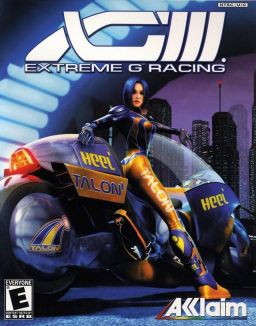
XGIII: Extreme G Racing, also known as Extreme-G 3, is a racing video game developed by Acclaim Studios Cheltenham and published by Acclaim Entertainment for the PlayStation 2 and GameCube. This game serves as a sequel to Extreme-G 2 and is followed by XGRA: Extreme-G Racing Association.

NHL Hitz 2003 is an ice hockey video game published by Midway Sports. One version was developed by Black Box Games and released on the Xbox, PlayStation 2, GameCube in 2002. The other was developed by Exient Entertainment and released on the Game Boy Advance. It is the second game of the NHL Hitz series. The Game Boy Advance version can be linked with up to three other systems for four-player play.

ESPN MLS ExtraTime is a sports video game released in 2001-2002 by Konami. It is available for PlayStation 2, Xbox, and GameCube. Clint Mathis is on the cover. The original ExtraTime was released for PS2 seven months after ESPN MLS GameNight on the PlayStation, with the GameCube and Xbox versions released in 2002 afterward as ESPN MLS ExtraTime 2002. MLS ExtraTime was the last in the series as the MLS sold its video game license to EA Sports' FIFA series.

NCAA Football 2003 is a video game of the sports genre released in 2002 by EA Tiburon. Its cover athlete is former Oregon Ducks quarterback Joey Harrington.

Smashing Drive is a racing video game developed and published by Gaelco and distributed by Namco. The game was released in arcades in 2000 and was ported to the GameCube and Xbox in 2002 by Point of View and Game Boy Advance in 2004 by DSI Games and Namco.
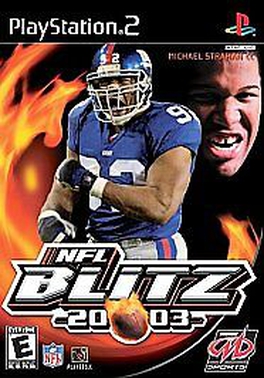
NFL Blitz 2003 is a video game published by Midway Sports for Game Boy Advance, GameCube, PlayStation 2 and Xbox in 2002.

FIFA Football 2003, known as FIFA Soccer 2003 in North America, and simply FIFA 2003 is a football simulation video game produced by Electronic Arts and released by EA Sports. It was released in 2002.
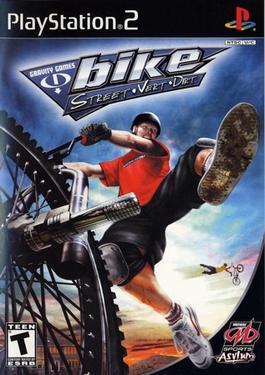
Gravity Games Bike: Street Vert Dirt is a sports video game developed and published by Midway for the PlayStation 2 and Xbox. It was released in North America on June 27, 2002 for the PlayStation 2 and on September 4, 2002 for the Xbox. It was the only game released under the Gravity Games license by Midway.




















